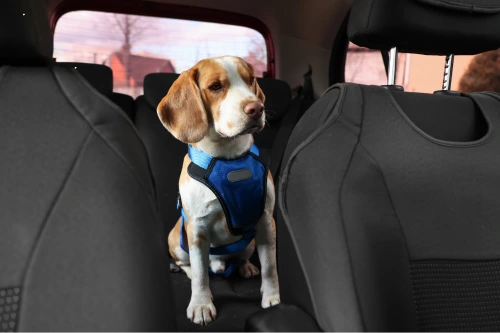Embrace the Dog Seat Belt
Key Takeaways
– A dog seat belt or other pet restraint prevents injury and death in pets during accidents.
– Only 17% of owners try to secure their pets in vehicles.
– Pets should never be in the front seat, especially the driver’s lap.
– The pet care industry lacks regulation, meaning many products fail to deliver on their promises of safety.
– The Center for Pet Safety (CPS) is the only nonprofit organization testing the safety of dog seat belts, dog harnesses, and other pet restraints.
– 26 products currently are Center for Pet Safety certified
– Sleepypod is one of the leaders with many products CPS-Certified.
– Never restrain a pet by their collar
Importance of the Dog Seat Belt
A dog harness or dog seat belt is one of the best ways to prevent serious injury or death to your pet while driving. However, manufacturers do not create all products equally. In a multi-billion-dollar industry, few regulations exist to keep pets safe in cars.
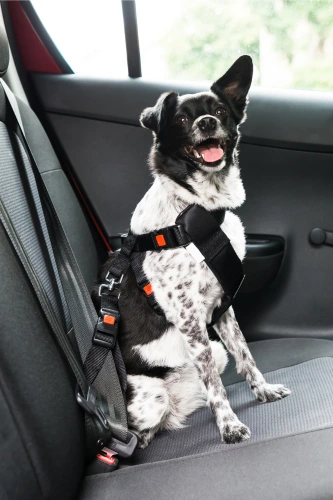
Consider this:
- In a 50-mph crash, a 10-pound dog produces up to 500 pounds of force—enough to fracture a child’s skull.
- An 80-pound dog in a 30-mph crash can create 2,400 pounds of force.
- At 70 mph, a 60-pound dog produces over 4,200 pounds of force—enough to break an adult’s femur or ribs.
Loose pets can turn into furry missiles, endangering themselves, passengers, and drivers. We know humans should wear seat belts. We are very good about securing our children in car seats. Why not do the same for our pets?
According to a 2010 AAA/Kurgo Survey:
- 55% of pet owners admit to petting their dog while driving.
- 31% acknowledge being distracted by their pet.
- 26% let their pet ride in the front seat.
- 21% allow pets to sit on their laps while driving.
- Only 17% use any form of pet restraint.
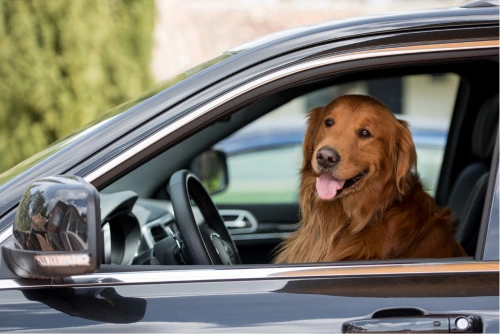
Pets roaming freely in a vehicle can block the driver’s view. They can also shift gears, or even open and close automatic windows. A pet sitting on a driver’s lap is especially dangerous. In a crash, an airbag can cause fatal injuries to the pet. The driver could also be injured by the pet.
If your pet struggles with fear, anxiety, or stress during car rides, consider a professional trained in Fear Free techniques. This guide from Fear Free Happy Homes can help you get started on making car rides safe and stress-free for your pet.
The Risks of Loose Pets in a Crash
Loose pets can make minor accidents into life-threatening situations:
- For Pets: Pets can be thrown from vehicles, suffer severe trauma, or even die. Escaped pets might run into traffic, cause more accidents, or become lost.
- For Passengers: A pet’s impact can harm children and adults in the vehicle.
- For Drivers: Distractions caused by pets can lead to accidents.
Proper restraints along with placing pets in the back seat or a secured crate can lower these risks.
Why a Dog Harness or Pet Restraint Is Crucial
The pet care industry lacks regulation, meaning many products fail to deliver on their promises of safety. According to Dr. Elisa Mazzaferro, formerly of VECCS (Veterinary Emergency and Critical Care Society) , “There are recommendations, but there are no rules.” This highlights the importance of organizations like the Center for Pet Safety (CPS), the only nonprofit providing testing on pet product safety.
Founded in 2011, the Center for Pet Safety conducts crash tests to evaluate pet safety products. They ensure companies meet strict safety standards and offer reliable options for pet owners.
CPS-Certified Products at a Glance
To date, only 26 products have earned Center for Pet Safety (CPS) certification:
- 8 harnesses: All from Sleepypod.
- 9 carriers: Including Sleepypod and Gunner Kennel.
- 9 crates: Including Gunner Kennel and Lucky Kennel.
It’s important to note that products may include caveats when it comes to whether they are certified or not. For instance, a certain crate or carrier may only be certified in a certain size and/or used with a specific accessory. The Gunner Kennel G1 must be used with the Strength Rate Anchor Straps to be compliant with the Center for Pet Safety certification. Therefore, it is important for pet owners to review the details on certification for specific products using the Center for Pet Safety’s CPS Certified website link. Certified products must continue to meet CPS’s strict standards, or certification is revoked. Pet owners should regularly check the CPS website for updates.
How Crash Testing Works
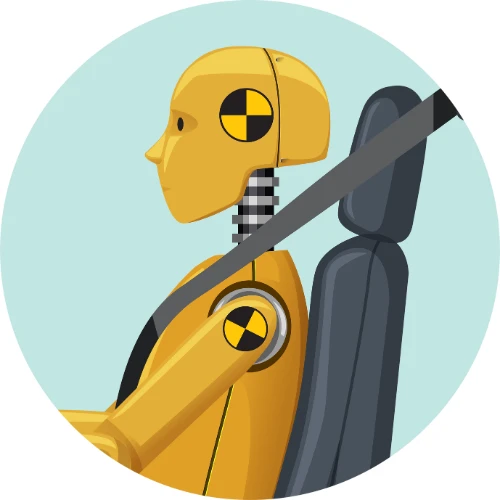
The Center for Pet Safety tests simulate head-on collisions at 30 mph, using dummy pets of various weights to mimic real-world scenarios. These tests evaluate the effectiveness of restraints in keeping pets secure during a crash.
Limitations: While Center for Pet Safety testing is rigorous, it doesn’t address side collisions or all weight ranges. Even so, certified products far exceed the safety provided by untested or failed options.
Sleepypod: A Leader in Pet Safety
Sleepypod stands out as a trusted brand for pet restraints. I personally use a Sleepypod harness for my 55-pound dog. It has performed reliably in several abrupt stops, keeping my pet secure.
Certified Sleepypod Products:
- Harnesses: Clickit Sport and Clickit Terrain, available in sizes up to 90 and 110 pounds, respectively.
- Carriers: Options include the Sleepypod Mini, Atom, Mobile Pet Bed, and Air, for pet weights up to 7 pounds for the Mini and up to 18 pounds for the Air.
All Sleepypod-certified products have received high ratings from the Center for Pet Safety, making them a top choice for pet transportation safety.
Choosing the Right Dog Car Seat for Your Pet
When selecting a dog seat belt or pet restraint, prioritize CPS-certified products. Many manufacturers claim to crash-test, but lack independent verification. Always verify claims by checking the CPS website or contacting them directly.
Additional Tips for Pet Safety
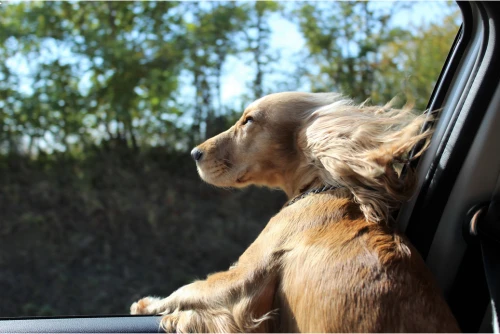
- Train Your Pet: Introduce restraints early and use positive reinforcement to make car rides enjoyable.
- Keep Windows Closed: Avoid letting pets stick their heads out. Debris and wind can harm their eyes, and they may accidentally operate the window.
- Collars Are for Tags Only: Never restrain your pet inside a vehicle by their collar. Doing so risks their safety. Pets may escape or release from their collar during an accident. Being thrown around during a crash can cause major life-threatening damage to a pet’s neck and spine if tethered by their collar. Suffocation is a real threat when pets are improperly secured by their collar. Only secure pets following the guidelines provided by a manufacturer for their CPS Certified products.
- Plan for Emergencies: Know the locations of pet emergency clinics along your travel route.
- Seek Immediate Care After Accidents: Even if your pet appears fine, internal injuries may not be obvious right away.
- Overall Pet Safety: Protecting your pet goes beyond using proper pet restraints. Their safety and wellbeing should always be your top priority. Consider their safety and wellbeing at all times. Avoid common dangers like leaving pets in hot cars, and learn essential skills such as pet first aid and CPR. Keep your home and property safe from toxic plants and food. Additionally, ensuring pets get their routine vaccinations and wellness checkups will help pets stay healthy. As a pet owner or pet care professional, you are their protector. Do everything in your power to keep pets in you care happy, safe, and thriving.
Conclusion: Safe Transportation is Responsible Pet Ownership
Driving with your pet is a joy, but it comes with responsibilities. A dog seat belt and other pet restraints like those from Sleepypod, Gunner Kennel, or Lucky Kennel protect not only your pet but everyone in the vehicle.
Make pet safety a priority. Buckle up your furry family members—because their lives matter too.
